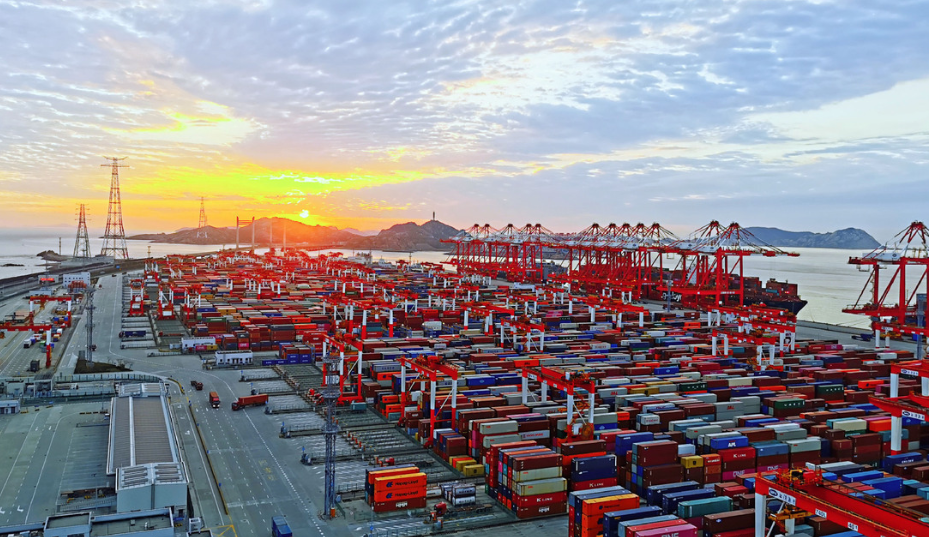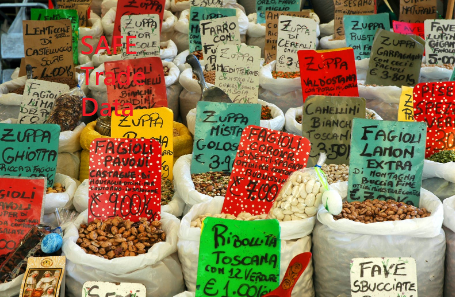Government working to expand trade, economic cooperation with all economies
The country's foreign trade is stabilizing thanks to its complete and resilient supply chains, new forms of foreign trade, such as cross-border e-commerce, and its participation in various free trade agreements such as the Regional Comprehensive Economic Partnership agreement, said Wang Shouwen, vice-minister of commerce and China international trade representative at the Ministry of Commerce, noting that the sector will maintain momentum in the years ahead as more policy measures are expected to be rolled out.
With weakening overseas demand, global inflation, COVID-19 pandemic and geopolitical tensions affecting China's foreign trade, it is vital and necessary to launch a new round of policies to ease pressure on businesses, and stabilize foreign trade and the world's supply chains, Wang said.
In addition to assisting exporters to attend exhibitions in overseas markets, enhancing support for cross-border e-commerce and improving the logistics system for the next step, the government has introduced a series of support measures to help companies smooth all the links in their export and import activities in late September.
The Ministry of Commerce has also urged local authorities to strengthen support for foreign trade enterprises in epidemic prevention and control, energy consumption, labor recruitment and logistics, and "help them fulfill their contracts on time".
Facilitated by supportive measures and the resilience of its electromechanical industry chain, China's foreign trade surged more than 10 percent year-on-year to 27.3 trillion yuan ($3.81 trillion) during the first eight months of 2022, data from the General Administration of Customs showed.
Compared with countries in Southeast Asia or other parts of the world, China has a complete supply chain support system. The country, backed by its capacity scale advantage, is capable of delivering the goods within a short period and meeting overseas clients' demand for short-term replenishment of inventory, said Hong Junjie, vice-president of the University of International Business and Economics in Beijing.

A view of Shanghai's Yangshan Port in East China, Jan 1, 2022. [Photo/Xinhua]
Echoing this positive sentiment, Chen Bin, executive vice-president of the China Machinery Industry Federation in Beijing, said the Chinese market is able to greatly cut the cost of innovation, logistics, market development and even raw material procurement for both domestic and global manufacturers. Its scale edge helps reduce a crucial part of the total manufacturing cost.
Liu Xiangdong, a researcher at Beijing-based China Center for International Economic Exchanges, suggested that China should make good use of multilateral and bilateral free trade deals, speed up the building of a network of high-standard free trade areas, and build more stable and resilient industry and supply chains.
"These efforts will help create more favorable conditions for the high-quality growth of foreign trade," he said.
While preparing to join the Comprehensive and Progressive Agreement for Trans-Pacific Partnership (CPTPP), and the Digital Economy Partnership Agreement (DEPA), China has signed 19 free trade agreements with 26 countries and regions to date, and its trade value with FTA partners accounts for around 35 percent of its total trade, data from the Commerce Ministry show.
China will "work on expansion, quality and effect" when implementing its FTA enhancement strategy to effectively connect domestic and international markets, Shu Jueting, spokeswoman for the Ministry of Commerce, said at a regular news conference held in Beijing in September.
As well as continuing to more forward current FTA negotiations, the government will also strive to forge free trade agreements with more willing trading partners, to jointly sustain regional economic integration, liberalization and facilitation for trade and investment, said Jin Hai, director-general of the General Administration of Customs' department of general operation.
The confidence of Chinese exporters climbed in the third quarter, with revenues and profits seeing quarter-on-quarter growth, according to a survey released by the China Council for the Promotion of International Trade (CCPIT) in late September.
The study found that the confidence of 45.1 percent of China's exporters gradually recovered in the third quarter, and more than 30 percent of Chinese exporters are expected to achieve year-on-year growth in annual trade volume, which nationally is 4.09 percentage points higher than that in the second quarter.
Sun Xiao, spokesman for the Beijing-based CCPIT, said that China's export structure has been notably optimized and upgraded, with exports of electromechanical products — computers, vehicles, smartphones and other high-end items — soaring proportionately in foreign trade.
He said this pattern has reshaped China's role from a manufacturer of low-end products such as furniture and apparel to a provider of high value-added industries, including electric vehicles and liquefied natural gas carriers.
While many domestic companies are shipping goods ranging from soccer balls to toys for the upcoming 2022 FIFA World Cup, which will be held in Qatar in November and December, Higer Bus Co Ltd, a Suzhou, Jiangsu province-based bus and truck manufacturer, delivered 1,815 coaches to Qatar late last month. All of them will be put into service for the tournament this year.
"Because Chinese manufacturers have distinct advantages in terms of cost control and production execution, many overseas orders for both electric and fuel-powered buses have flowed into our plants in recent years," said Chen Yi, head of the company's business and financing unit.
Together with previous export orders to Qatar, Chen said the company will have more than 6,000 coaches to serve the World Cup later this year.





















































First, please LoginComment After ~